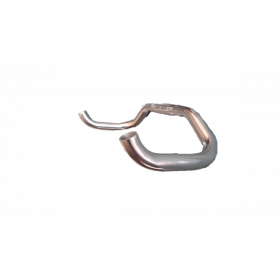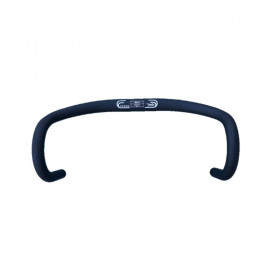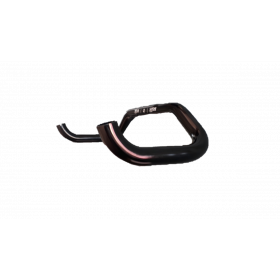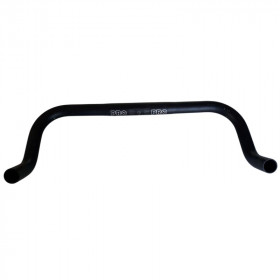-
 New productHandlebar Satori Dali Low alu
New productHandlebar Satori Dali Low alu- €19.99
-
 New productExtra+ drop kronos handlebar for track, fixie
New productExtra+ drop kronos handlebar for track, fixie- €12.99
-
 New productTrack bike bar TKR 42.5 cms OS
New productTrack bike bar TKR 42.5 cms OS- €24.90
-
 UsedDeda Pista handlebar black 31.8 mm 42 cms
UsedDeda Pista handlebar black 31.8 mm 42 cms- €39.99
-
 New productHandlebar Satori Dall Low black
New productHandlebar Satori Dall Low black- €19.99
-
 New product -60%Pursuit handlebar PRO
New product -60%Pursuit handlebar PRO- €16.00
- €39.99
Showing 1-6 of 6 item(s)
Choosing the right track bike handlebar: features and specifications
Choosing the right track bike handlebar is crucial for performance and comfort on a velodrome. Designed specifically for track cycling, this cockpit component plays a key role in aerodynamics, maneuverability, and bike control. Discover the essential features to consider before investing in a track handlebar.
Key features of a track handlebar
Unlike standard road bike handlebars, track handlebars are designed to maximize efficiency and stability at high speeds. Here are the distinctive elements to consider:
-
Material: track handlebars are typically made of aluminum or carbon. Aluminum offers an excellent stiffness-to-weight ratio and good durability, while carbon provides weight savings and improved vibration absorption.
-
Shape: track handlebars have specific shapes to optimize aerodynamics and control. They are usually drop bars with a more pronounced curvature than road bike handlebars. Some models also feature a shorter reach to promote a more compact and aggressive riding position.
-
Width: track handlebars are generally narrower than road bike handlebars, typically ranging from 35 to 42 cm. This reduces wind resistance and enhances speed.
-
Angle and Drop: the angles and depth of the handlebar affect hand positioning and rider aerodynamics. A deep drop allows for better air penetration and encourages an aggressive posture suited for sprints and accelerations.
Specificities of a track bike handlebar
Velodrome racing imposes specific constraints on cyclists, requiring handlebars that meet the demands of the discipline:
-
Increased rigidity: on the track, cyclists do not have brakes and must rely on precise and stable handling. A rigid handlebar ensures efficient power transfer without unwanted flex.
-
Specific stem mounting: track handlebars generally use a standard clamp diameter (31.8 mm), but some high-end models feature integrated designs for maximum aerodynamics.
-
Lever compatibility: track bikes have no derailleurs or brakes, so handlebars lack mounts for shifters or brake levers. However, some models can accommodate specific accessories for time trial events on the track.
How to choose the right track handlebar ?
The choice of handlebar depends on the type of track discipline you practice:
- Sprint and Keirin: opt for an ultra-rigid handlebar with a deep drop and reduced width to enhance aerodynamics.
- Pursuit and endurance: a slightly wider and more ergonomic model will ensure better comfort over long distances.
- Omnium and versatility: an intermediate handlebar that balances stiffness and comfort allows for greater adaptability.
Conclusion
The track handlebar is an essential component for cyclists looking to optimize their performance on the velodrome. Its shape, material, and dimensions directly influence the rider's position and ability to control the bike at high speeds. By choosing a model suited to your riding style, you will benefit from precise handling and improved efficiency to push your limits on the track.
